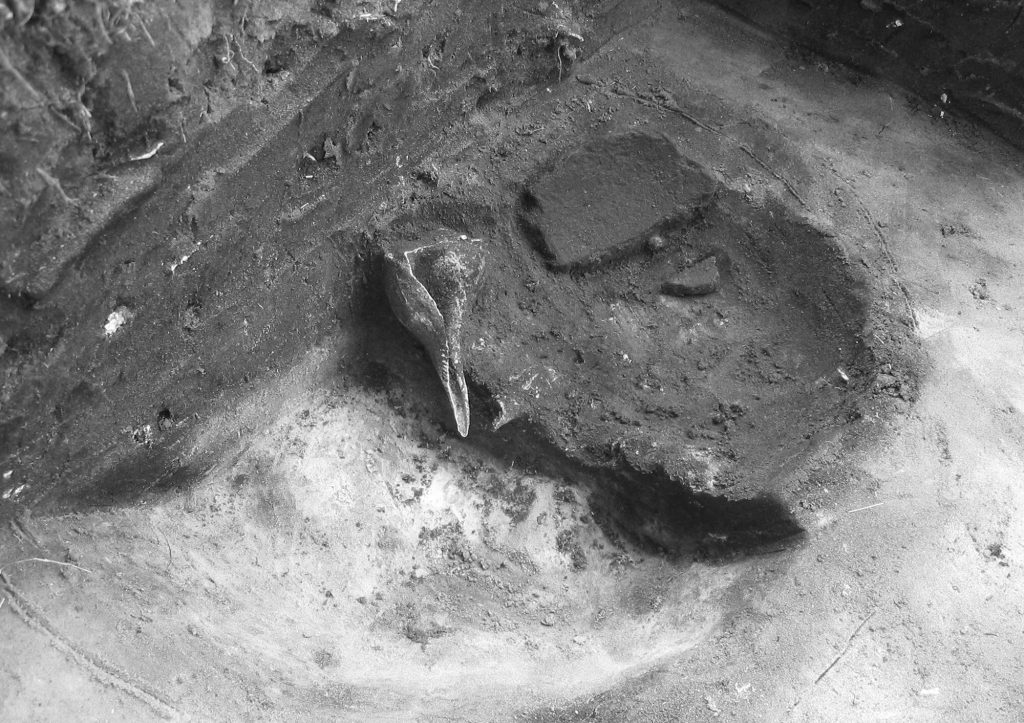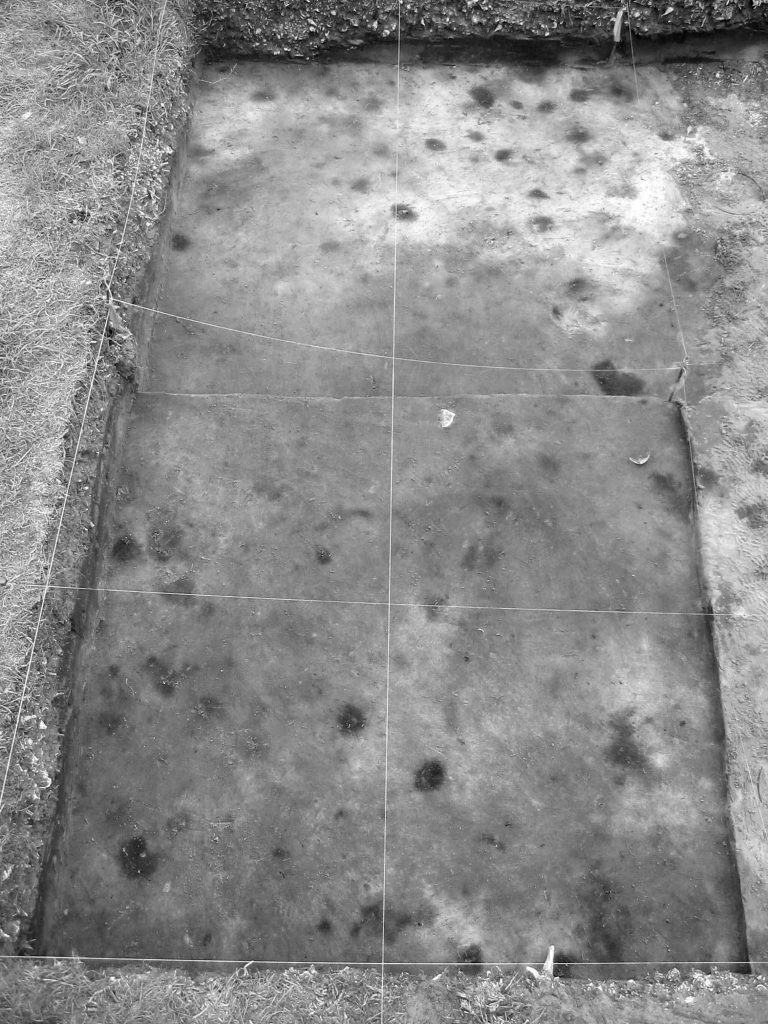The second season of excavations at Surf Clam Ridge has concluded, exposing a total of 26 sq. meters (31 sq. yards) of early Calusa floor space dating to the late 5th century A.D.
Having penetrated and sampled an overlying shell midden and a black sand floor deposit, excavators were rewarded with a wide range of pits and postmolds scattered across the largely artifact-free light gray sand comprising the bulk of the ridge’s elevation.

Analysis is still underway, but patterning is evident in the distribution of these features, including a generally linear array of basin-shaped pits, ranging from oval to circular, and normally less than 20″ wide and 20″ deep. At least two of these pits were used for burning, including an obvious hearth with a central core of ash, an outer ring of partially charred black material, and an upper fill of sand and trash. Other pits were simply filled in with sand and trash.
Stains from rotted or burned posts are ubiquitous, including many smaller posts (about 4″) and a number of arger posts (about 6″) clustered to the shoreward side of the ridge crest. Detailed analysis should assist in evaluating what kind of structure may be responsible for the patterns observed, and what kinds of activities were carried out there so many centuries ago.

This article was taken from the Friends of the Randell Research Center Newsletter Vol 3, No. 2. June 2004.